The Balu Blue Foundation plays a vital role in rehabilitating and protecting dingoes on Western Australia’s Ningaloo Coast, furthering the preservation of this iconic species. Learn more about Balu Blue Foundation, its founder Brinkley Davies, and what you can do to support their work.
Sincerest thank you to Kate Wolny for sharing her stunning photos of wild dingoes in the Ningaloo region.
About Balu Blue Foundation
The Balu Blu Foundation is an environmental charity and not-for-profit based in Exmouth, Western Australia. Founded by marine biologist Brinkley Davies, Balu Blue is on “a mission to protect our wild places, wildlife and tread lightly”.
The Foundation has three key pillars: rehabilitation, education and preservation.
Balu Blue’s work currently centres on Australian sea lions, the Great Southern Reef, addressing plastic pollution, offering wildlife care and support, developing the Wildlife First Response app and the Nyinggulu Dingo Project.
About Balu Blue’s Founder, Brinkley Davies
Brinkley Davies is a marine biologist, conservationist, free diver, author and surfer. With a deep passion for protecting wildlife, Brinkley takes a hands-on approach to her work, raising her rescue kangaroo, Bunji, and leading the fieldwork and treatment team of the Nyinggulu Dingo Project.
Brinkley is also the founder of Bandicoot by Brinkley, an ethical jewellery collection which supports Balu Blue’s work. A renowned free diver, Brinkley also runs life-changing wildlife expeditions, including swimming with humpback whales in Tonga.
In memory of Balu
Balu was Brinkley’s much-loved puppy, who died from 1080 poison. He was only a year old. Balu was on farmland in South Australia when he unknowingly consumed 1080 poison.
1080 poison is a lethal substance used legally in Australia to kill dingoes, foxes and feral cats.
Purpose-designed baits are laced with 1080 poison and air dropped or hand-placed throughout Australia in National Parks, farmland and regional parks.
The consequences of 1080 poison are far-reaching, inhumane and fatal. There is no antidote.
Unfortunately, many animals die painful and terrifying deaths from 1080 poison — not just their intended victims.
Balu was one of them.
Balu Blue Foundation honours Balu by striving to protect Australian wildlife from threats and promote better ways of approaching wildlife management.
Balu Blue’s work with dingoes in Ningaloo, Western Australia
The Ningaloo (Nyinggulu) Coast is an integral part of Western Australia’s landscape. Ningaloo Coast is listed as a World Heritage site and covers 604,500 hectares. Located 1200 kilometres north of Perth, the Ningaloo Coast is known for the extensive Ningaloo Reef as well as ecologically significant flora and fauna, including wild, Australian dingoes.
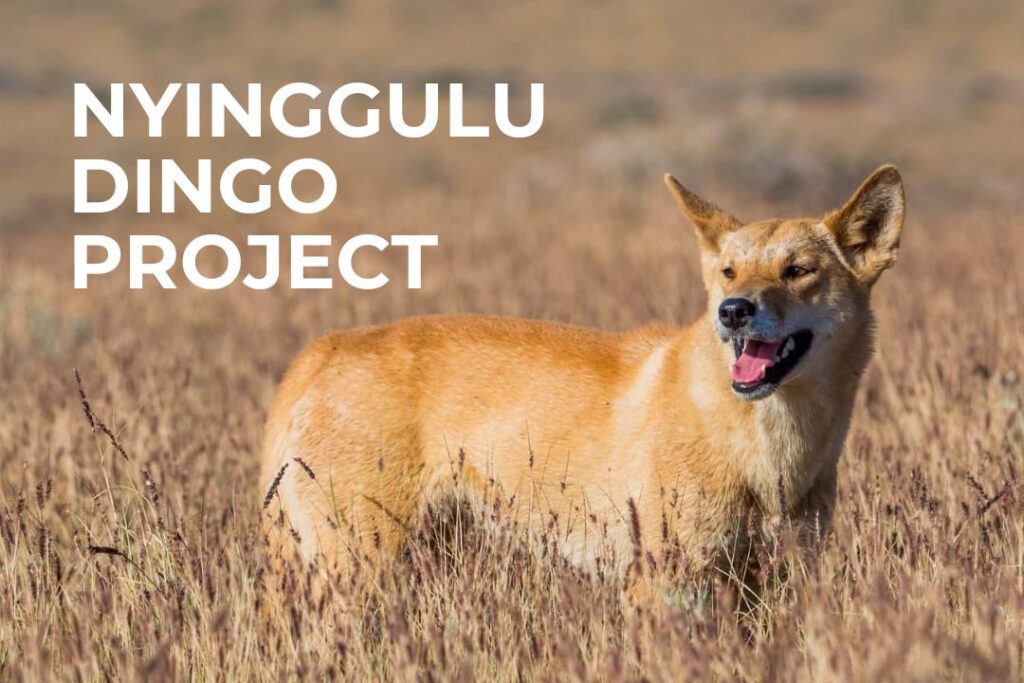
Nyinggulu Dingo Project.
Nyinggulu Dingo Project
The Balu Blue Foundation is working to alleviate the suffering of native Australian dingoes in the Ningaloo region of Western Australia as well as “cultivate awareness, understanding and reverence for these invaluable architects of our local ecosystem”.
Balu Blue recognises that as a native predator, dingoes play a key role in Australia’s ecosystem and also enhances wildlife experiences for residents and visitors to the Ningaloo Coast.
Treating mange in wild dingoes
Wild Australian dingoes can experience a distressing condition known as mange. Mange is caused by invasive parasites, leading to significant discomfort and pain, including severe itching, fur-loss, and skin infections. There are three types of mange, with two types being highly contagious: sarcoptic mange and otodectic mange.
With a team of vets, mentors, wildlife rescues and carnivore advisory board, Balu Blue observes and protects the Ningaloo dingo population, using valuable data to identify and monitor dingoes.
Along with data collected by the Foundation, Balu Blue draws upon the community’s support, utilising citizen science to collect and analyse photos, videos and information submitted by members of the public.
With the information collected, Balu Blue is able to treat dingoes suffering with mange, as well as treat any injuries they may have. In addition to treating individual dingoes, Balu Blue works to prevent mange from spreading in local dingo populations.
Once treatment is underway, Balu Blu continues to monitor dingoes in the Ningaloo region, monitoring threats, as well as the dingoes’ health and safety.
Data collected through the Nyinggulu Dingo Project such as DNA also contributes to other conservation and research efforts in Australia.
Balu Blue works tirelessly to protect dingoes from conflict, they reduce the risk of baiting and trapping dingoes and advocate for better, safer methods of dingo management.
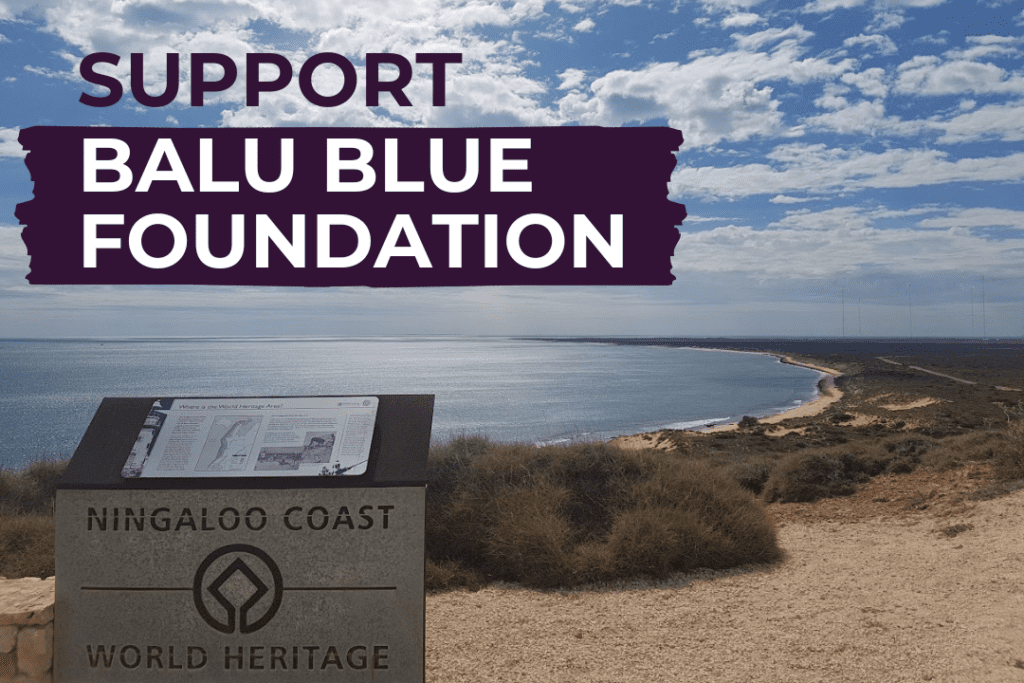
How you can support the Ningaloo dingoes and The Balu Blue Foundation
You can support Australia’s dingoes and The Balu Blue Foundation by donating on the Balu Blue website. You can also purchase merchandise from their website, or purchase jewellery from Bandicoot by Brinkley. If you’re interested in sponsoring, collaborating or fundraising for the Balu Blue Foundation, contact the Foundation at info@balubluefoundation.org.
Send your dingo photos and videos to The Balu Blue Foundation
If you’re visiting the Ningaloo Coast and you observe wild dingoes, send your dingo photos and videos through:
- Whats App or SMS 0457 510 820, or
- Email info@balubluefoundation.org, or
- Facebook message @balubluefoundation.
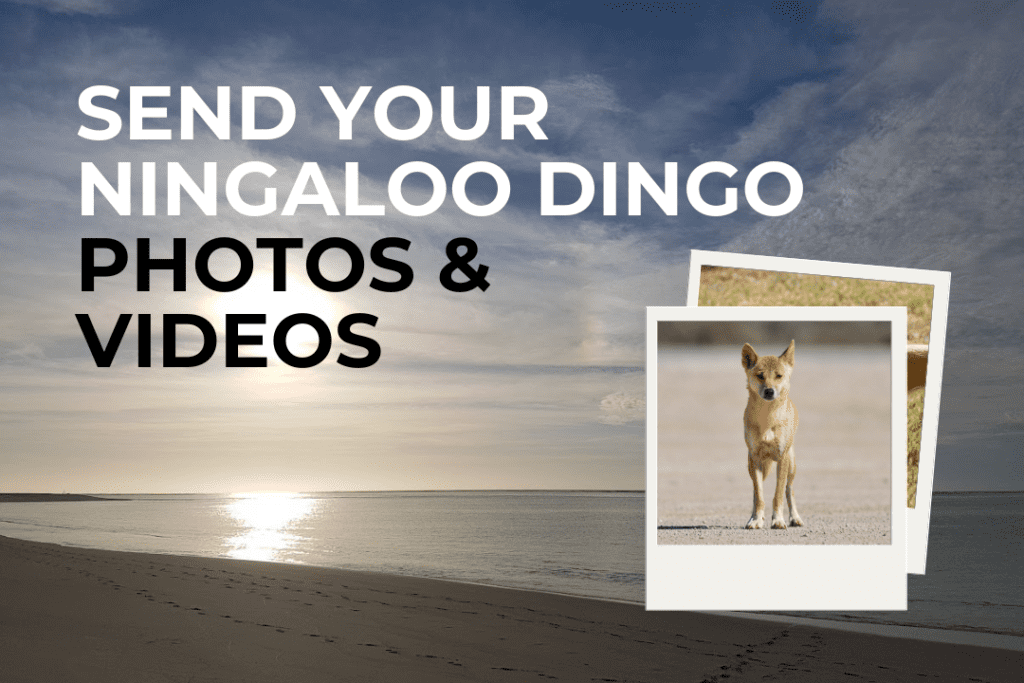
About 1080 poison in Cape Range National Park and the Ningaloo Coast
Unfortunately, the use of 1080 poison is widespread and can be found in places you visit. This list is not a complete list, however the WA Parks and Wildlife Service offers a map you can use to find where the government and others have recently placed or air-dropped 1080 poison. This list only shows 1080 baits distributed by one specific organisation — there are other organisations who use 1080 baits and extreme caution for your pets is necessary.
As of today, 1080 poison can be found throughout the Ningaloo Coast, including:
- Cape Range National Park, including Turquoise Bay, Mangrove Bay, Lakeside, Tulki Beach, Oyster Stacks, Sandy Bay, Osprey Bay, Yardie Creek and throughout many campgrounds and accommodation including Sal Salis and more
- Five Mile Beach
- Harold Holt Naval Communication Station (including Bundegi Beach and near Mildura Wreck and Dunes Beach)
- Janes Bay
- Bateman Bay (just north of Coral Bay)
It’s important to note that 1080 baits are used throughout the Gascoyne region to specifically target dingoes, under the term “wild dogs” despite research showing that most “wild dogs” in Western Australia are native Australian dingoes.
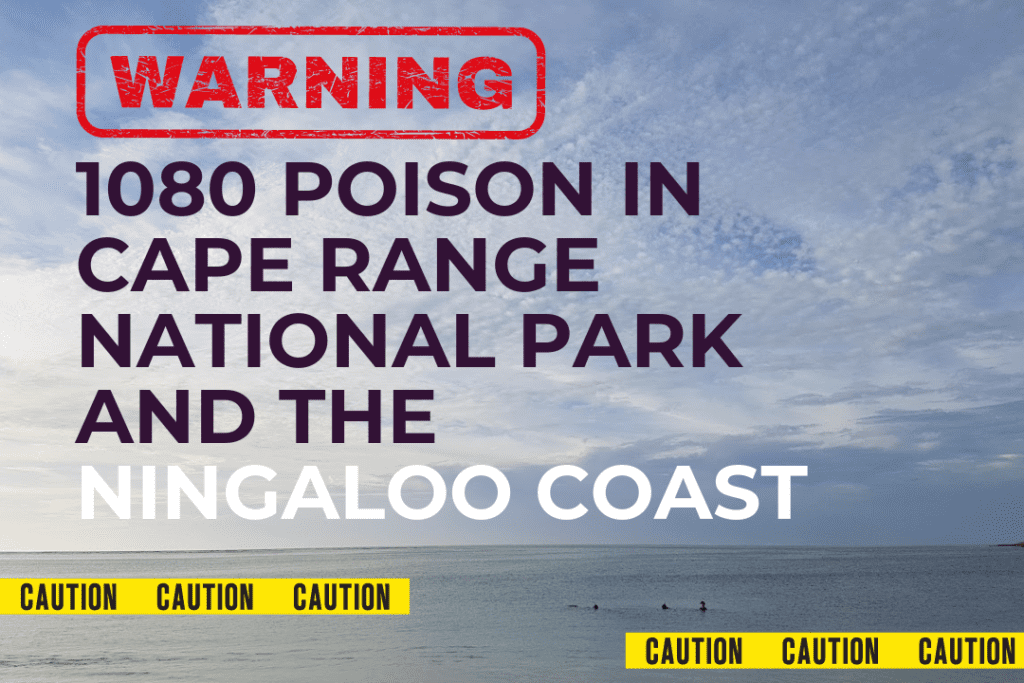
Bringing your dog to Cape Range National Park and the Ningaloo Coast
If you’re travelling around Australia with your four-legged friend, keep in mind that dogs are not allowed in National Parks in Australia, with the exception of registered assistance dogs.
To access many parts of the Ningaloo Coast, you’ll need to enter Cape Range National Park, where pet dogs are not allowed. You’ll be asked to turn around and won’t be able to enter the park.
If you’re accessing other parts of the Ningaloo Coast, remember that 1080 poison is everywhere — keep your dog with you at all times and consider using a leash. 1080 is lethal to any child, adult or animal who consumes it. Although you can use maps to see where 1080 has been placed, research shows that 1080 poison can be relocated by animals to non-baiting areas. Your pets are at risk of consuming 1080 poison, or consuming an animal which has eaten 1080.
1080 poison first aid for pets
If your dog has consumed 1080 poison, take your dog to the vet immediately.
It’s also a good idea to call your vet to let them know you are on your way.
The Animal Poisons Centre can also provide advice over the phone 1300 869 738.
Further first aid information can be found in the government’s first aid for 1080 guide, which you can also find here.
You can find more information and help put an end to 1080 poison at The Coalition Against 1080 Poison and Defend the Wild.

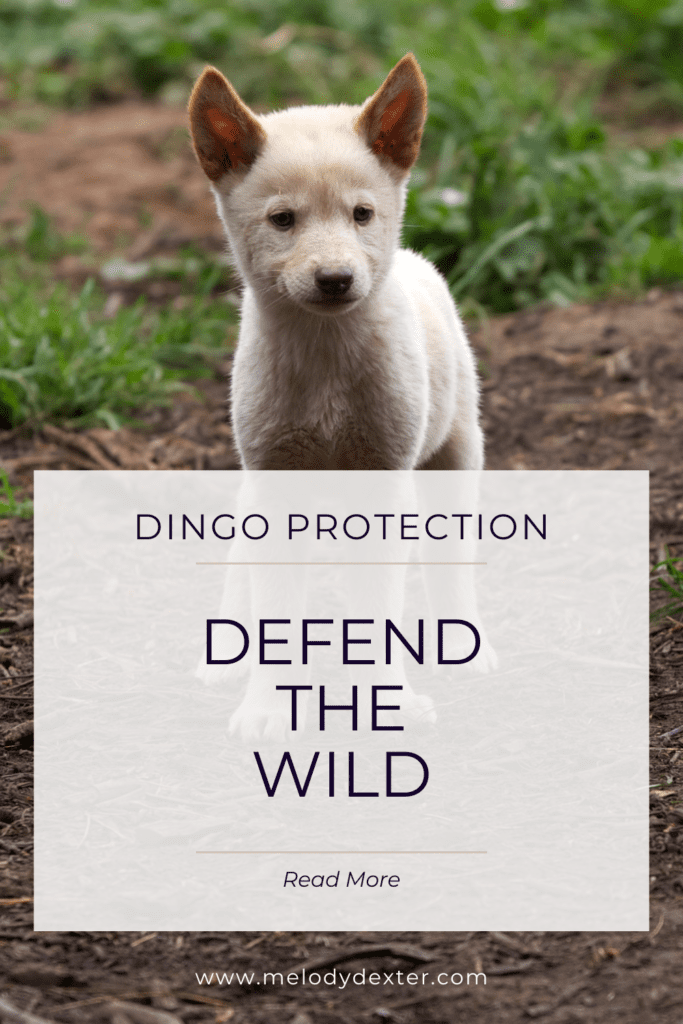
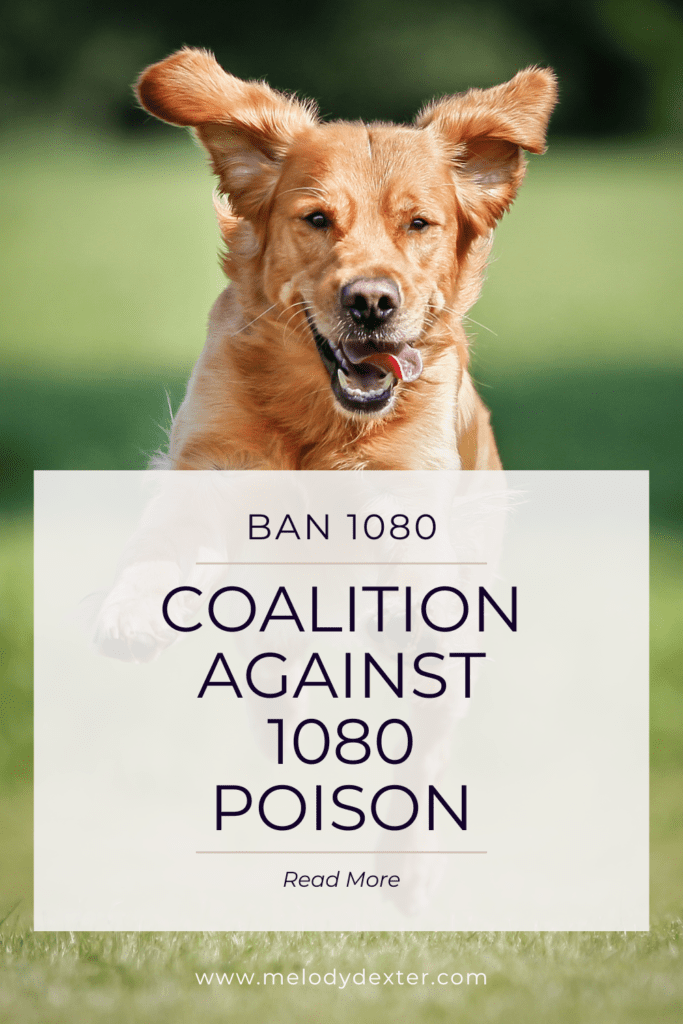
0 Comments